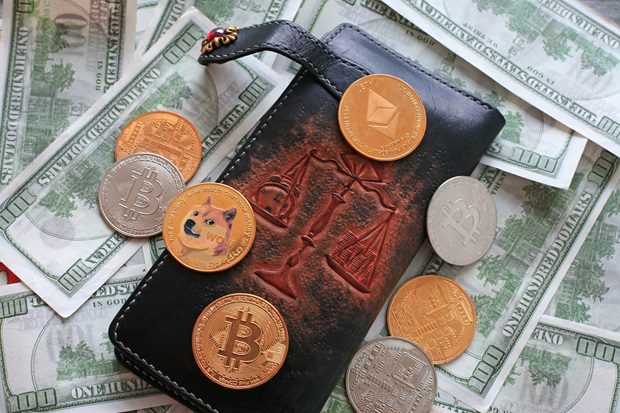The pioneer in cryptocurrency, Bitcoin is a virtual form of money that can serve as payment and revenue. This medium of exchange is beyond the regulatory powers of governments, businesses or even individuals. Unlike government-issued money, Bitcoin is generated, stockpiled and traded by means of a system of ledgers called blockchains. The blockchains are composed of solutions to computational problems — an activity known as mining. Due to its decentralized nature, Bitcoin has a history of price volatility.
Influences
As a commodity, Bitcoin is subject to the market forces that affect other goods, yet it enjoys little protection from government controls or subsidies. Thus, supply and demand fluctuations have a significant role in price. Supply is related to the level of mining at any given time. Evolving software is making it easier to mine and create blockchains, so, in that sense, supply faces no threat. Furthermore, demand is often the result of media attention. El Salvador was long affected by a bad Bitcoin reputation, though that is changing. Not negligible are current events: wars, economic collapses, court decisions, and other momentous happenings can add to the volatility.
History
Since its introduction, Bitcoin experienced a financial rollercoaster. In 2013 and 2014, business magazines named it alternately the best and worst of investments. From its inception, the absolute limit on Bitcoin units (BTCs) is 21 million. However, operators were able to cut in half the compensation for each blockchain, meaning that the 21 million has a long way to go before its fruition. In fact, the price has soared and crashed and stabilized several times over the course of its brief history. 2022, for example, gets the label of “crypto winter” because the price fell hard when the U.S. Federal Reserve System started a major offensive against inflation. Consequently, institutional and individual investors opted for traditional currencies as safer bets. Still, the following year, BTC recovered 70 percent of these losses.
Prices
There are numerous online resources that track BTC prices — with reference to the U.S. dollar — in real-time and over longer periods. There are threshold levels at which investors grow interested in acquiring BTCs and which they are put off from doing so. These support and resistance levels reflect the public response as values rise to become cost-prohibitive and fall to affordability. Germany demonstrates responsiveness to these highs and lows in a big way. The liberal legal arrangements in places like Australia account for the rising and falling of Bitcoin price AUD because of less regulation. One trend that accounts for a recent price surge is the acceptance of the crypto-currency by the financial establishment. Court decisions have also added to BTC’s legitimacy. Assurances of safety, as with Taiwan, lead countries to adopt BTC as an official currency.
Macroeconomics affect Bitcoin prices. When a nation-state’s currency experiences a value freefall, Bitcoin becomes appealing. Also, the price of software will play a role in value.
Frequently Asked Questions
What are the most important factors affecting Bitcoin price?
Supply and demand, public perception from news reports, government intervention, intensity of mining, and world events all impact BTC prices.
Why does Bitcoin price fluctuate so much?
Among the reasons it fluctuates are the relative newness of the digital asset and the related technology. Additionally, its supply is limited, and it trades outside of the established exchanges.
Best method to predict price?
The technical patterns referenced above help to make good predictions. Other experts engage in “whale watching,” i.e. observing the buying and selling among large investors, to foretell future pricing.
Disclaimer: This information is of a general nature only and should not be regarded as specific to any particular situation. This should not be taken as financial advice to buy, trade, or sell cryptocurrency or use any specific exchange. This is not intended for use as investment, financial or legal advice, as each individual’s need will vary.
Binance Australia is not affiliated, associated, endorsed by, or in any way officially connected with any individual or organisations mentioned in the article. Binance Australia is not liable for any loss caused, whether due to negligence or otherwise arising from the use of, or reliance on, the information provided directly or indirectly by use of this newsletter and expressly disclaims any and all liability for any loss or damage you may suffer.




















